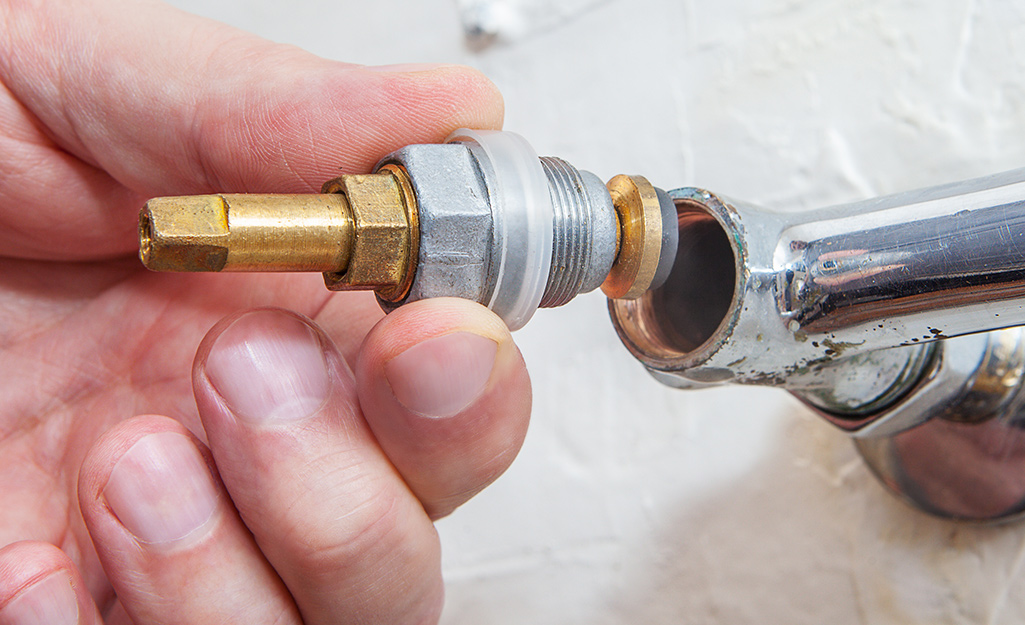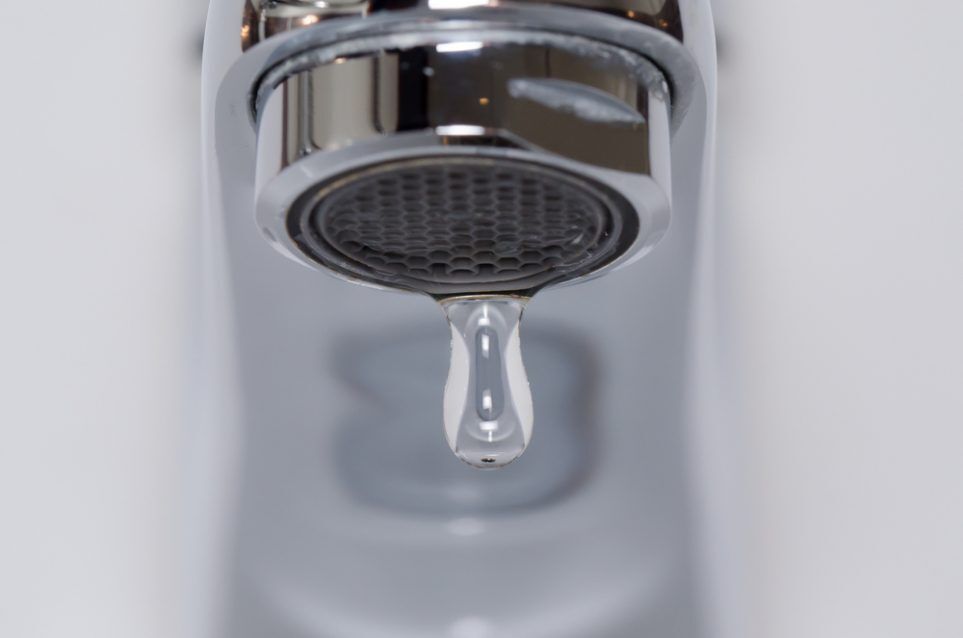Which It's Important to Repair a Broken Faucet
Which It's Important to Repair a Broken Faucet
Blog Article
The author is making a number of great pointers relating to Should I Repair or Replace a Leaky Faucet? in general in this great article beneath.

Leaking faucets could look like a small hassle, yet their impact exceeds just the inconvenience of the audio. From wasting water to sustaining unneeded economic expenses and health and wellness risks, neglecting a leaking faucet can bring about different consequences. In this short article, we'll look into why it's crucial to address this usual house issue promptly and effectively.
Wastefulness of Water
Environmental Effect
Dripping faucets contribute substantially to water waste. According to the Environmental Protection Agency (EPA), a single faucet dripping at one drip per second can squander greater than 3,000 gallons of water annually. This not only strains water sources yet likewise influences environments and wildlife based on them.
Financial Prices
Raised Water Bills
Beyond the environmental effect, dripping taps can pump up water expenses significantly. The accumulated wastage with time converts into higher energy costs, which can have been stayed clear of with prompt fixings.
Potential Building Damages
Furthermore, prolonged dripping can bring about harm to fixtures and surfaces bordering the faucet. Water build-up can trigger staining, deterioration, and even structural issues if left ignored, resulting in extra repair service expenses.
Health and wellness Issues
Mold and Mildew Growth
The constant presence of moisture from a dripping tap produces an ideal atmosphere for mold and mildew and mildew development. These fungis not just endanger interior air quality but likewise present health and wellness risks, especially for people with breathing conditions or allergies.
Waterborne Illness
Stationary water in dripping taps can end up being a breeding ground for bacteria and various other microorganisms, boosting the danger of waterborne illness. Impurities such as Legionella germs grow in stagnant water, possibly causing severe illnesses when consumed or breathed in.
DIY vs. Expert Repair work
Advantages and disadvantages of Do It Yourself Repair
While some might attempt to take care of a trickling tap themselves, do it yourself repair services feature their own collection of difficulties. Without correct expertise and tools, do it yourself attempts can exacerbate the problem or cause insufficient repair work, extending the trouble.
Advantages of Employing a Professional Plumber
Employing a professional plumber makes certain that the underlying cause of the leaking tap is resolved successfully. Plumbers possess the competence and equipment to diagnose and repair faucet concerns successfully, saving time and decreasing the risk of more damages.
Step-by-Step Overview to Taking Care Of a Dripping Tap
Devices Needed
Prior to trying to deal with a dripping tap, collect the required devices, including a flexible wrench, screwdrivers, replacement components (such as washing machines or cartridges), and plumber's tape.
Typical Tap Issues and Their Solutions
Recognize the type of tap and the certain issue triggering the drip. Common troubles include worn-out washing machines, rusty valve seats, or faulty O-rings. Refer to manufacturer directions or on the internet tutorials for detailed assistance on repair work.
Safety nets
Regular Maintenance Tips
To stop trickling faucets, do routine maintenance such as cleansing aerators, evaluating for leakages, and changing damaged components without delay. Additionally, take into consideration mounting water-saving devices or updating to extra reliable fixtures.
Importance of Prompt Fixes
Addressing dripping taps as quickly as they're seen avoids more water wastage and possible damage, inevitably conserving both water and money in the future.
Influence On Building Value
Perception of Well-Maintained Home
Keeping a property in good condition, including attending to upkeep problems like leaking faucets, enhances its regarded worth and charm among potential buyers or occupants.
Influence on Resale Value
Features with properly maintained plumbing components, consisting of taps, command higher resale worths in the property market. Resolving trickling faucets can add to a favorable impact throughout building inspections and negotiations.
Environmental Duty
Private Payment to Conservation
Taking duty for dealing with leaking faucets straightens with broader efforts towards water preservation and ecological sustainability. Every individual's activities collectively make a significant effect on protecting priceless sources.
Sustainable Living Practices
By focusing on prompt repairs and taking on water-saving behaviors, individuals add to sustainable living methods that profit both existing and future generations.
Conclusion
Addressing a trickling tap goes beyond simple benefit; it's an important step toward conserving water, minimizing monetary expenses, and protecting health and wellness and property. Whether through DIY repair services or professional help, doing something about it to fix trickling taps is a little yet impactful way to promote accountable stewardship of resources and contribute to a healthier, extra lasting future.
How to Fix a Leaky Faucet: Step-by-Step Repair Guide
A leaky faucet may seem like a simple annoyance, but if it's not fixed promptly, that leak could cost hundreds to potentially thousands. From water damage to mold, mildew, and high water bills, even a tiny leak can be catastrophic if left unattended. Damage like this can even affect the overall value of your home, so it's important to take the right approach for leaky faucet repair. You may need the help of a plumber in some cases, but we've got a few tips you can try on how to fix a leaky faucet before calling the pros.
Four Faucet Types
When you're learning how to fix a leaky faucet, the first step is knowing what kind of faucet you're working with! There are four common types.
Cartridge Faucets
Cartridge faucets come in one- or two-handled varieties. In one-handled cartridge faucets, hot and cold water combines in a single cartridge. In the two-handled versions, hot and cold water are controlled separately and mixed in the faucet.
Ball Faucets
Ball faucets have a single lever you push up and down to adjust the pressure and rotate to change the temperature. A slotted metal ball controls the amount of water allowed into the spout.
Compression Washer Faucets
They're the oldest type of faucet, but they're still used in many homes — especially older ones. Compression faucets have two separate handles that, when turned, raise or lower the washer that seals a water valve. This valve stops water from flowing through the faucet when it is turned off.
Disc Faucets
Disc faucets rarely need to be repaired due to their maintenance-free design. The water flow is controlled by two discs — the upper one raises and lowers against a fixed lower disc, creating a watertight seal. If your disc faucet starts leaking, you may need to replace the seals or clean residue buildup from the inlets.
Fixing a Leaky Faucet
Step 1: Turn Off the Water
Whether you're learning how to fix a leaky bathtub faucet or how to fix a leaky kitchen faucet, always turn off the water supply to your working area when you're fixing a leak. The last thing you want is a flood added to your list of things to fix.
Look for the shutoff valves below your sink or around the tub and turn them clockwise to stop the water flow. If your faucet doesn't have shutoff valves, you may need to turn off the water for the whole house. Check to make sure it's off by turning the faucet on. If nothing comes out, you're ready to start the repair.
Step 2: Take Apart the Faucet
How you disassemble your faucet depends on the type of fixture you have. You can use a flathead screwdriver to remove the caps on top of the handle or handles for cartridge and compression faucets. Inside, you should see handle screws. Unscrew these with a screwdriver to remove the handle.
Disc- and ball-style faucets will typically have an inlet screw near the handle, and removing that will reveal the interior of the faucet.
Detach the Valve Stem
For cartridge- and compression-style faucets, you'll see the inner valve stem or cartridge once you remove the faucet handles. If you have a compression faucet, unscrew the brass valve stem. If you have a cartridge faucet, pull out the cartridge. If your cartridge has been in place for a while, it may require some tools or extra force to remove it due to mineral deposits.
Examine and Replace Parts
Once you've removed the parts, check them out to confirm what needs to be replaced. You may see corroded rubber washers, O-rings, stems, or cartridges. On a ball-style faucet, check the seats and springs for damage.
If you need to repair a leaky disc faucet, check the inlet and seals on the lower disc.
Once you determine what parts must be replaced, visit your local hardware store. Bring the damaged parts with you to ensure you can purchase the correct components to replace them.
Clean Valves and Faucet Cavity
If you've removed a stem or cartridge, you may notice mineral buildup in the faucet's threads. Use white vinegar to clean the valve seat by soaking it for a few minutes, then scrub it away with a soft toothbrush and rinse with warm water. You can also clean the interior of the faucet in the same way.
Reassemble the Faucet
Once your faucet is cleaned and the required parts have been replaced, it's time to reassemble it. Put the pieces back together and slowly turn the water supply back on. Doing this slowly is crucial because too much initial water pressure can damage the new hardware you've just installed.
https://homewarranty.firstam.com/blog/how-to-fix-leaky-faucet

I was made aware of that report about Why Is It Important To Fix Your Leaking Tap/Faucet? from an acquaintance on our other web address. Do you know about anybody else who is excited about How to Fix a Dripping or Leaky Faucet ? Please feel free to promote it. Thank you for your time invested reading it.
Report this page